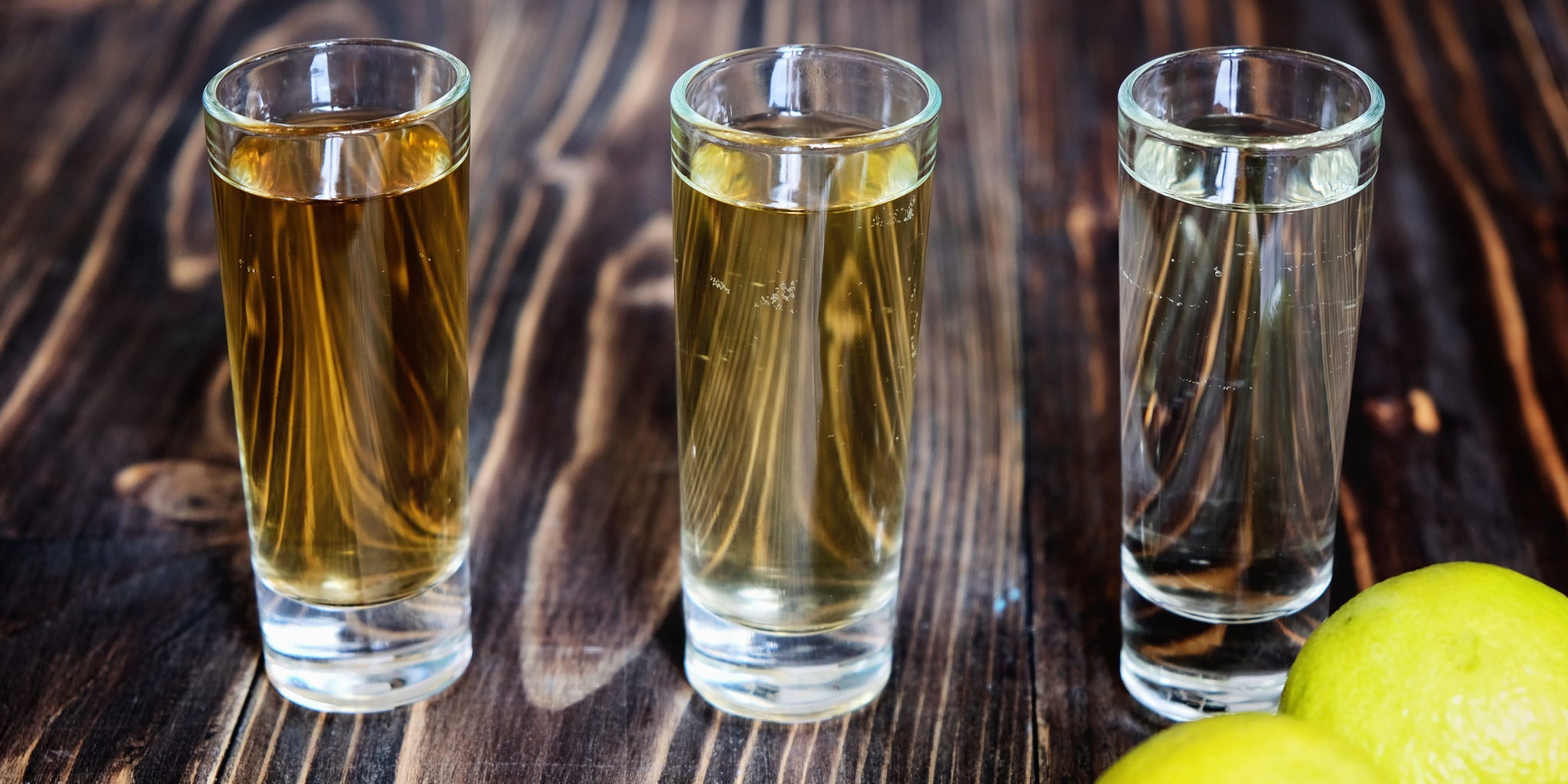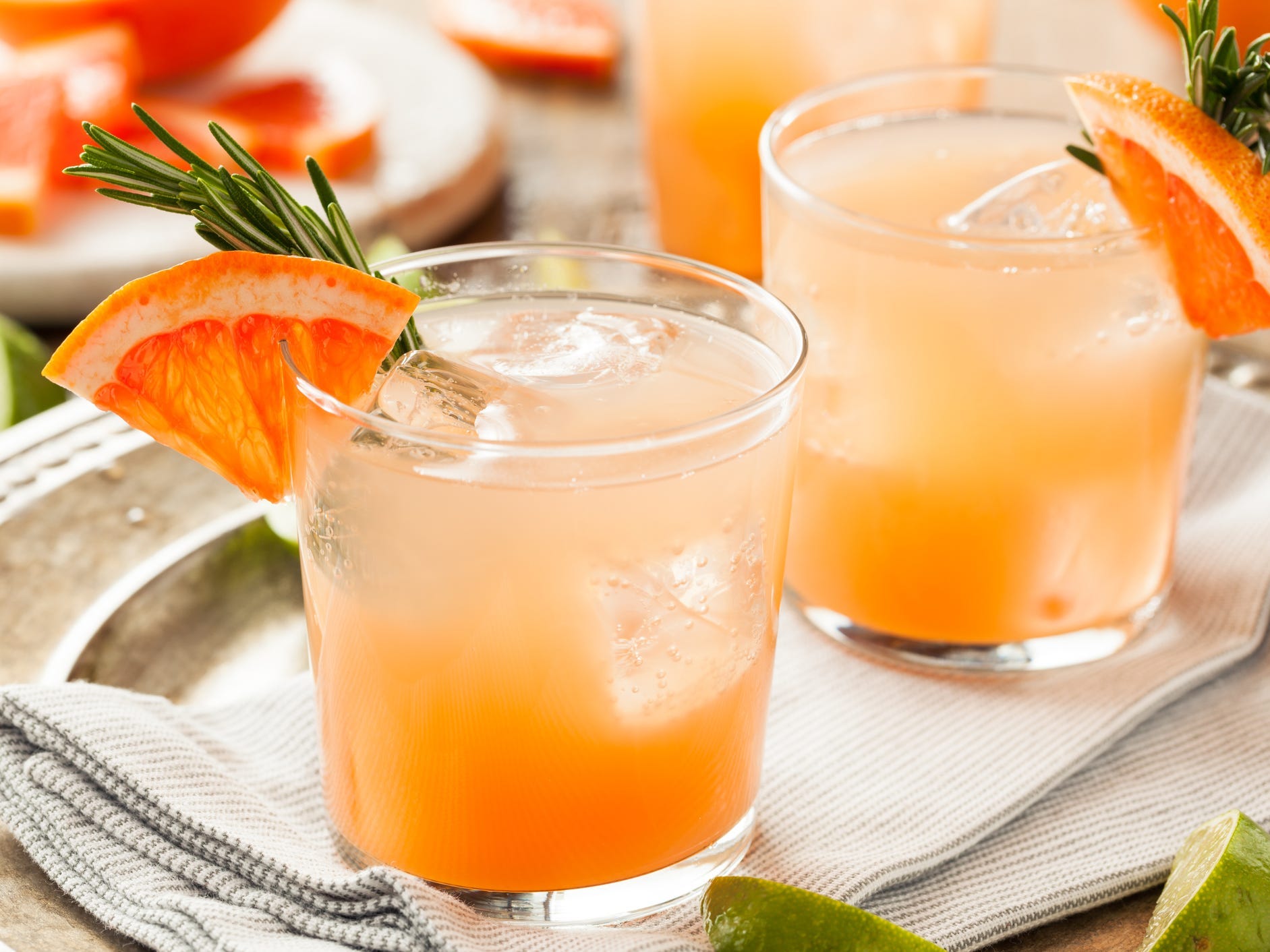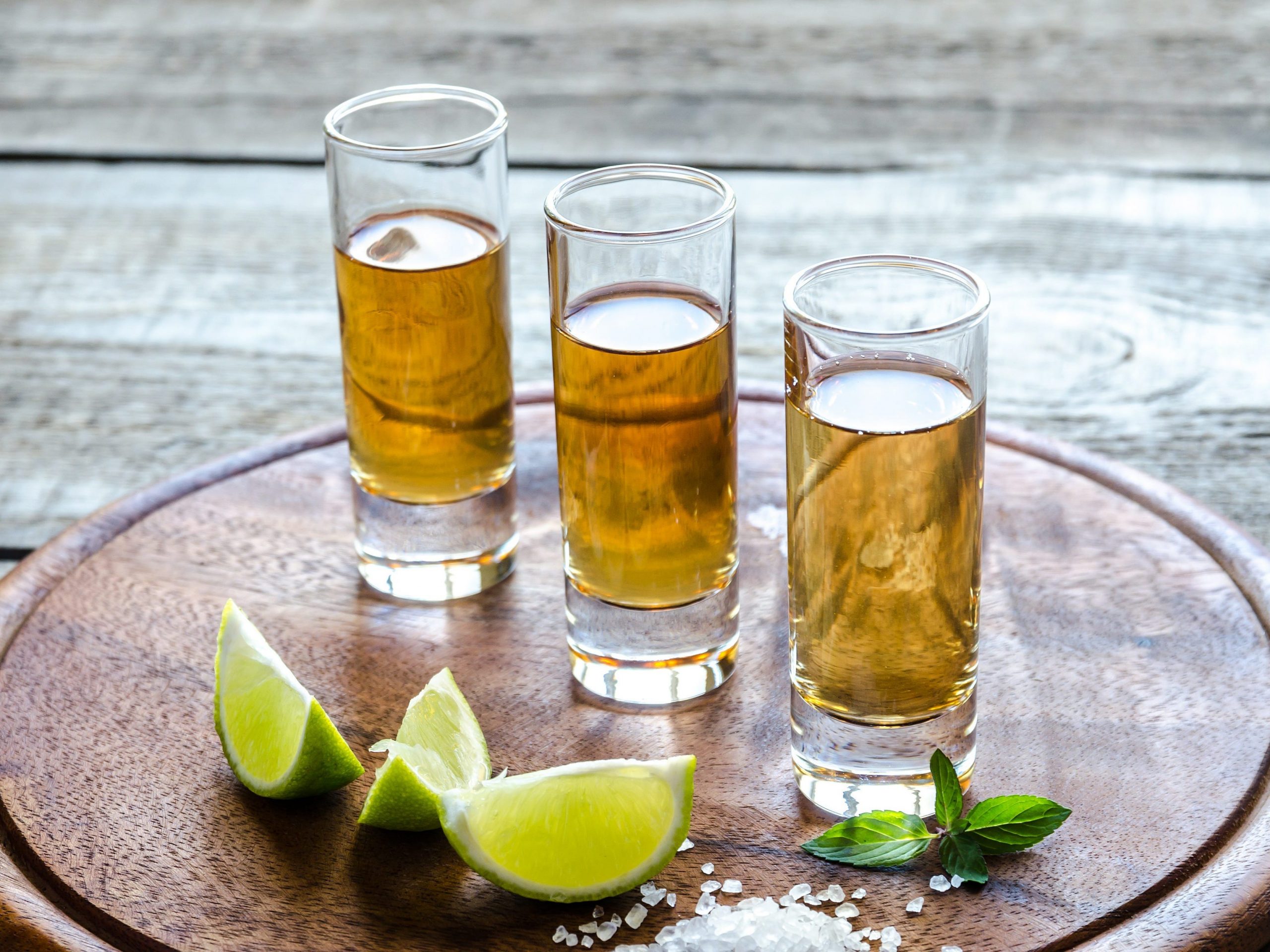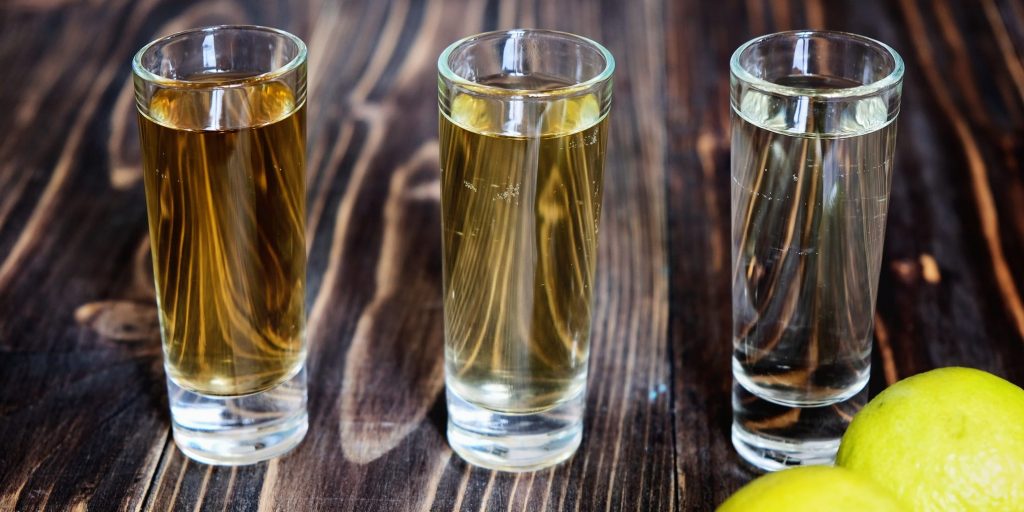
keira01/Getty Images
- There are five core types of tequila: blanco, joven, reposado, añejo, and extra añejo.
- The length of the aging process is the main factor that distinguishes these types.
- Blanco and reposado are great for mixing, while añejo and extra añejo are best enjoyed neat.
- Visit Insider's Home & Kitchen Reference library for more stories.
Tequila enthusiasts will tell you that there's something special about this distilled spirit: it's versatile enough to sip neat or to add to a wide variety of cocktails. Tequila can only be produced in certain areas of Mexico – because it's made from the native Weber blue agave plant.
What distinguishes each type of tequila from blanco to extra añejo – is how much time it spends aging in the barrels, says Miguel Saavedra, head bartender at Sotol Agave Bar at Hilton Los Cabos Beach & Golf Resort
Saavedra says the origins of tequila production can be traced back to the 16th century. Legend has it that during an electrical storm, lightning struck some agave plants, causing a fire that resulted in a honey-like taste and a powerful aroma. Tequila was born once people tasted the plant's sweet nectar.
However, Alexa Delgado, beverage manager at Lake Nona Wave Hotel, adds that it wasn't until Spanish conquistadors ran out of brandy and began distilling agave that tequila, as it is known today, began to take shape.
The flavors and aromas of tequila can vary vastly based on the climate, soil, and topography where the agave plants are grown. Most tequila is made in Jalisco, where it's divided into highland and lowland production, says Delgado. The agave fields in Los Altos (the highlands area) feature mostly red clay soil set at a higher elevation, which yields softer, rounder tequilas with fruity and floral flavors, while plants grown in the volcanic soils in the lowlands tend to have an earthy flavor with peppery and herbaceous notes.
Whether margaritas are your go-to drink, or you consider yourself a purist, here's what to know about the main types of tequila, and how they differ.
Blanco (aka silver)

bhofack2/Getty Images
What sets blanco tequila apart, according to Delgado, is that it's only aged for up to two months, if at all, and it's bottled within 60 days of distillation. This results in a clean, agave-forward tequila that Delgado says blends seamlessly into margaritas, palomas, and other light, citrusy mixed drinks. True to its name - blanco (meaning "white" in Spanish) is clear in color.
"A high-quality blanco can show the true skill of a distiller," adds Delgado. "Because there is no aging, there's nothing to help 'hide' any flaws."
Joven
Joven means "young" in Spanish - which is fitting, given that this blend fuses blanco tequila with a very small amount of aged tequila. The result is the best of both worlds: the youthful, clean characteristics of a blanco, but with the more mature qualities of a reposado or extra añejo.
Saavedra says these tequilas tend to be straw or amber in color, with floral aromas, and sweet notes of vanilla, spices, and fruits.
Joven tequila is well-suited to bold mixed drinks, like a Mexican Mule with ginger beer, lime juice, and agave syrup.
Reposado

AlexPro9500/Getty Images
Any tequila aged in oak for more than 60 days but less than a year is characterized as a reposado - which translates to "rested" or "restful" in Spanish. According to Saavedra, the oak barrel-aging adds an amber color and warm flavors of wood, vanilla, cinnamon, and other baking spices.
Reposados are a fitting substitute for bourbon in an old fashioned, says Delgado - especially if you also replace the sugar with agave nectar. Reposado can also add depth of flavor to a tequila version of a Manhattan, or a tequila martini with vermouth bianco and orange bitters.
Añejo
If it's aged more than a year, but less than three years, it's an añejo (or "old") tequila. That extra aging time allows the tequila to take on a fuller and more complex flavor, and darker color.
"This is a perfect sipping tequila," says Delgado. "It showcases all the best parts of the agave flavor profile with added notes of vanilla."
Saavedra adds that añejo tequilas usually have a more oily, creamy body and delicate amber color.
Claro tequila is a special type of añejo that is filtered to remove its color, and Delgado says they have a silky smooth finish.
Extra añejo
This newer classification, which didn't emerge until 2006, often appeals to bourbon fans. That's because extra añejo tequilas must rest for more than three years in the barrels, which explains why the name translates to "extra old." Saavedra says this aging process results in richer whiskey-esque flavors of caramel, vanilla, cinnamon, and chocolate. While a variety of different wood barrels may be used, the most common are American and French oak.
In order to appreciate the complex flavor profile, Saavedra recommends sipping it neat or on the rocks.
Insider's takeaway
Each type of tequila has its own unique flavor, color, and characteristics that are imparted during the aging process. There are no rules that dictate how to enjoy each type, and how you serve it may depend on the quality of the tequila as well as your personal preferences.
If you're looking for a rich, complex spirit that can be enjoyed on its own, consider an añejo or extra añejo tequila. On the other hand, blanco, joven, and reposado tequilas blend nicely into cocktails.
Whichever type you buy, experts strongly recommend seeking out a bottle that's labeled as 100% agave - a true tequila that comes with a smoother, more nuanced flavor, and less risk of a headache the next day.
